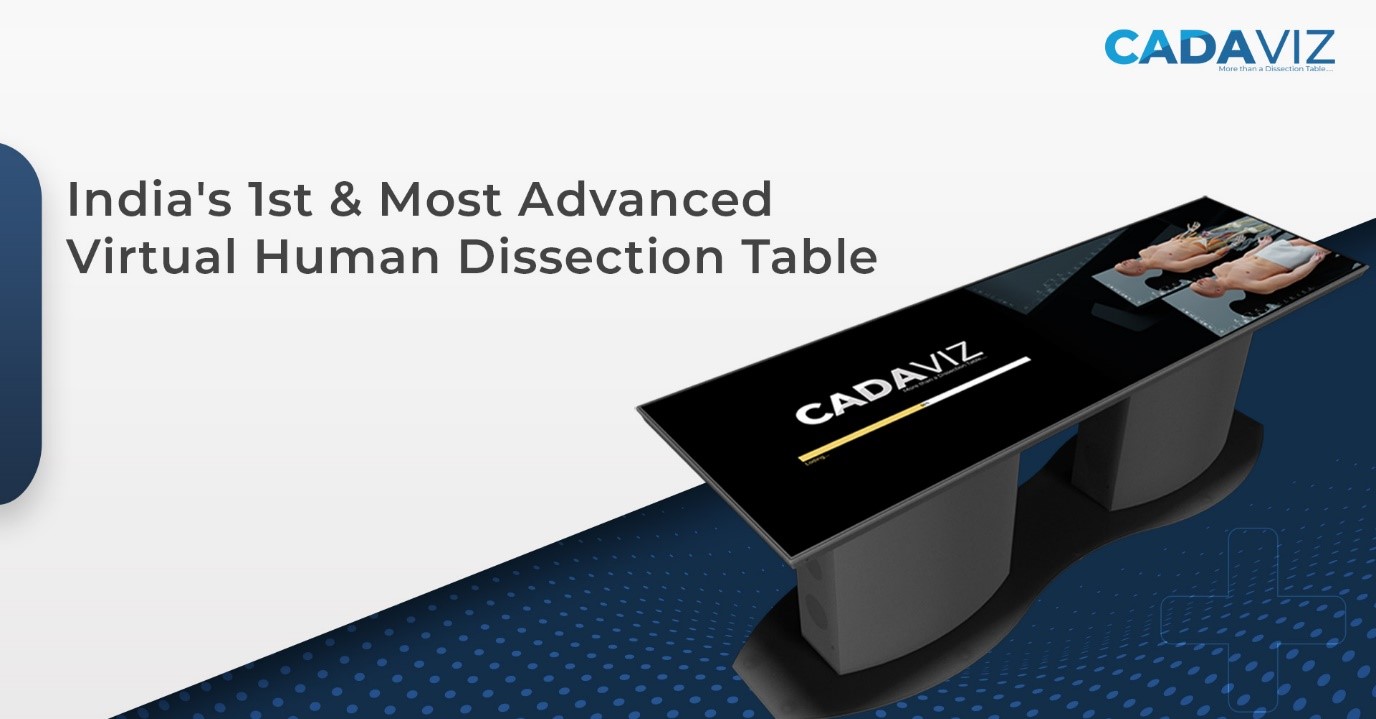Virtual Anatomy Dissection: Revolutionizing Medical Education
Anatomy is a very important subject in Biology. It is the science that throws light on the structure of the body. It focuses on understanding the various parts and components that make up the bodies of humans, animals, and plants. But the traditional way of studying anatomy has one common challenge that affects the overall learning outcomes.
It is the inability of learners to visualize the structure and organs of living organisms to the fullest. Human/Animal body is a very complex thing to study and when learners find visualization problems, it degrades not just their learning experience but the overall quality of medical training as well.
Further, complex terminologies, an overwhelming amount of information, lack of resources, and quality teaching worsen things to the next level.
But now medical students need not to worry anymore.
Now there is a solution to learn anatomy and perform dissection with ease.
Thanks to the advancement in technology, you can now learn anatomy in an immersive and interactive way seen like never before.
Welcome to the exciting world of virtual anatomy dissection, where you can not just learn about anatomy in a result-driven manner but practice dissection immersively.
What is Virtual Anatomy Dissection?
Virtual Anatomy Dissection is a computer-based simulation that allows medical students and professionals to explore and dissect anatomical structures virtually. It provides a realistic and interactive 3D experience, enabling learners to study human anatomy without the need for physical cadavers.

Virtual anatomy dissection offers various benefits over traditional dissection, like but not limited to
- Availability: There may occur a shortage of real cadavers, but you will never fall short of the virtual ones. As it can be manufactured as per our wish and demand. Everything is in our hands. Great, isn’t it?
- Visualization: Immersive 3D learning models enable learners to visualize every anatomical part in complete detail. It helps develop cognitive and imaginative skills to expand the knowledge base about the subject easily.
- Reusability: Real cadaver decomposes with time. You cannot perform dissection on them more than a couple of times. Their usability is very limited. On the other hand, virtual cadavers offer limitless dissections. They don’t decompose.
- Trauma-free: Many medical students often feel stressed and uncomfortable while working on a real cadaver. The foul smell of cadavers further deteriorates the learning environment. With a virtual one – the learning experience is trauma-free.
- Audio/Visual Aid: There are many virtual human dissection solution providers in the market. One among them is CADAVIZ (India’s 1st Virtual Human Dissection Table, a more detailed, comprehensive, and cost-effective product as compared to peers like Anatomage and Sectra). CADAVIZ offers supporting audio to explain structures in detail. Also, visual aid is provided to draw, take screenshots, highlight, split screen, save edited parts, etc., for more complete learning.
- Interactive: It doesn’t lead to boredom while learning. As students engage actively and lead to better learning outcomes. Also, it promotes better knowledge retention.
- Comprehensive Learning: You are provided with additional resources to make your learning comprehensive and complete. Top providers like CADAVIZ provide highly valued quizzes, substantive theory, and digital resources to offer a unique learning experience.
- Inclusive Learning: Virtual cadavers allow a large number of students to study together without any problem.
- Safe: Reduces exposure to hazardous materials and potential infections.
- Consistent Quality: Ensures uniformity in teaching materials and experiences.
- Self-Paced Learning: Students can learn and progress at their own speed. Practice whenever you want.
- Progressive Learning: Virtual anatomy software often offers varying levels of complexity, allowing students to start with basic structures and progress to more intricate systems.
- Error Tolerance: Even if you make a mistake while performing dissection, you can correct it without having any negative consequences to physical specimens. It thus allows learners to learn without worry and further boosts their confidence to continue smoothly.
- Sustainable: While there are ethical corners associated with real cadavers, virtual ones thus look more promising and sustainable.
- Cost-effectiveness: A single virtual human dissection table can help assist the learning needs of a huge number of students. Thus, it is considered a very cost-effective learning option in the long run.
Who Can Benefit from Virtual Anatomy Dissection System?
- Medical Colleges
- Medical Professionals
- Medical Students
A World Class Virtual Human Dissection Table

CADAVIZ, India’s 1st and most advanced virtual human dissection table, is rated as one of the best virtual human dissection tables by medical experts. It allows learners to study not just Anatomy but various other subjects as well like
- Histology
- Histopathology
- Prosection
- Clinical Examination
- Radiology
- Animal Anatomy
- Embryology
- Clinical Cases
- Paedology
- Physiology
- DICOM Image Visualization
It is built by an expert team of professionals who have graduated from illustrious institutions like IITs, IIM, DCE, and various top medical colleges. CADAVIZ is built using advanced technologies like AI, AR, and VR, and is known in the market for its superb learning features and benefits. Learn more.
It allows you to study dissection with ease. That too in a very immersive and result-driven way. Check video.
Final Words
The world of Virtual Anatomy Dissection represents a revolutionary approach to learn human anatomy. With its accessibility, cost-effectiveness, and interactive nature, this technology opens new horizons in medical education.
Embracing this innovative way of learning empowers students and professionals to embark on a transformative journey of anatomical exploration like never before.
Writer – Ashwini Deshmukh
Senior Content Writer



Comments
Post a Comment